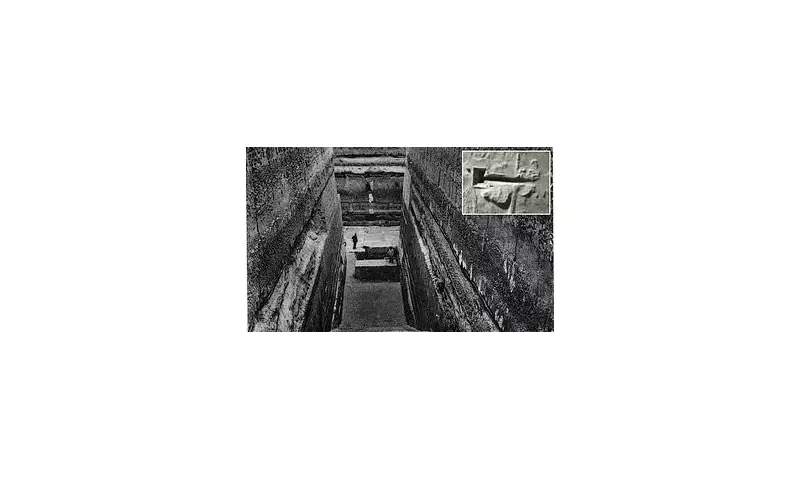
Deep beneath the sands of Egypt, archaeologists have uncovered what some are calling 'Egypt's Area 51' - a colossal T-shaped structure that promises to rewrite our understanding of ancient civilizations. This monumental discovery near Hawara has sent shockwaves through the archaeological community, revealing secrets buried for millennia.
The Mysterious Underground Complex
Using cutting-edge ground-penetrating radar technology, researchers have mapped an enormous subterranean network that stretches across an area previously thought to be empty desert. The structure's distinctive T-shape and massive scale have left experts questioning everything they thought they knew about ancient Egyptian architecture.
This isn't just another tomb or temple - the layout suggests something far more complex and mysterious. The labyrinthine design features multiple chambers, corridors, and what appear to be carefully planned access points, creating a puzzle that archaeologists are only beginning to unravel.
Why 'Egypt's Area 51'?
The comparison to the famous Nevada military base stems from both the secrecy surrounding the discovery and the structure's unconventional design. Like its American counterpart, this Egyptian complex appears designed to conceal something significant, though whether it's royal treasures, ancient knowledge, or something even more extraordinary remains unknown.
Local legends and ancient texts have long spoken of hidden chambers and underground networks in this region, but until now, most archaeologists dismissed these as mythological exaggerations. The discovery proves that truth can be stranger than fiction.
What Makes This Discovery So Significant?
- Unprecedented Scale: The structure covers an area larger than several football fields combined
- Unique Architecture: The T-shaped design has no known parallels in Egyptian archaeology
- Advanced Engineering: The precision and planning required suggest sophisticated mathematical and architectural knowledge
- Perfect Preservation: Being buried for centuries has protected the structure from looters and environmental damage
The Future of Exploration
Archaeological teams are now preparing for what could be the most significant excavation in decades. The delicate process of uncovering the structure without causing damage requires meticulous planning and state-of-the-art technology.
"This could change everything we know about ancient Egyptian civilization," says one leading Egyptologist involved in the project. "The scale and complexity suggest this was more than just a burial site - it may have served purposes we haven't even considered."
As preparations for the excavation continue, the archaeological world holds its breath, waiting to discover what secrets lie hidden within Egypt's most mysterious underground complex.





